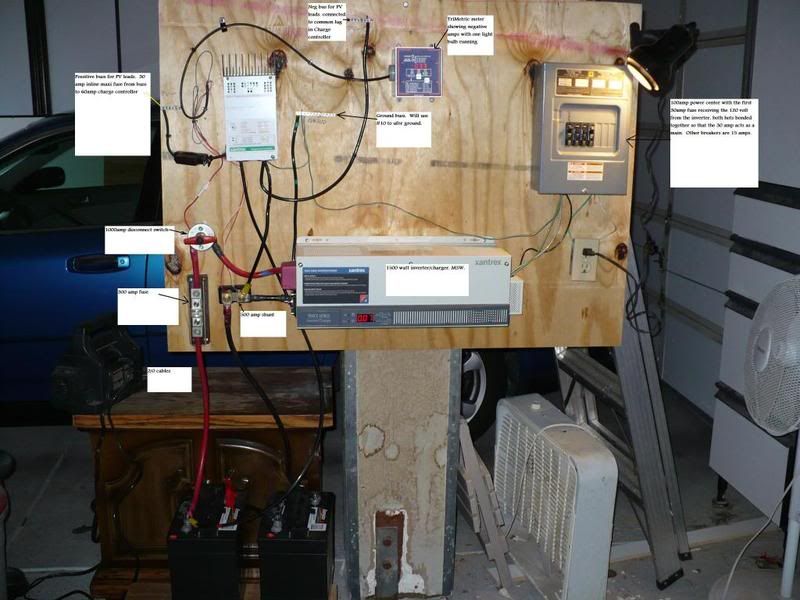Originally posted by jenny.navarrette
1. I'm not sure why you needed the 300amp fuse. The power inverter should be fused anyway. But it won't hurt anything.
The fuse on the + battery cable is in case there is a battery short - a tool falling and touching both terminals for example. [quote/]
| Quote: | | 2. Keep your DC lines short. That positive line from the charge controller to the positive terminal of the battery could have been shorter and
connected up at the 300amp fuse holder. |
Yes, I intended to shorten it on final installation but never thought of connecting it to the terminal at the disconnect switch.
| Quote: | | 3. With a 1500 watt inverter, you only needed one 15-amp breaker in the breaker box to carry the load. You have four. Most likely the inverter's
circuit protection would pop before the 15-amp breaker anyway. 15 amps @ 120 volts = 1,800 watts. To protect anything, a breaker has to pop before the
maximum load of the inverter. |
When I sized the photo for posting, the notes became too small to read. The first breaker is a 30 amp and acts as my 'main' because the hot from the
inverter goes directly to it; then I've bonded the to hot legs of the panel together thus making all slots 120v and going thru the 30 amp 'main'. The
rest of the breakers are 15 amp and will serve as circuit breakers for the cabin.
| Quote: | | 4. Why are there 4 wires running from the inverter to the breaker box? Should only be 2 wires feeding the breaker box. |
There are only three; black (hot), white (neutral) and green (ground). The green is going to the ground buss in the load center, could just as easily
go to the ground buss on the board.
| Quote: | | 5. Is that a fusible link on the 12v negative input to the inverter? Redundant with the 300 amp fuse on the positive. |
No, that is 500 amp shunt for the TriMetric meter.
| Quote: | | 6. I don't know where you are installing this, it looks like a standalone system away from the power grid, but if you also have utility power you will
need an isolation switch to disconnect from the grid. |
This is simply a test setup for my small off-grid cabin in Baja.
[Edited on 6-3-2011 by jenny.navarrette] |


 [/img]
[/img]

 http://[/img]
http://[/img]
